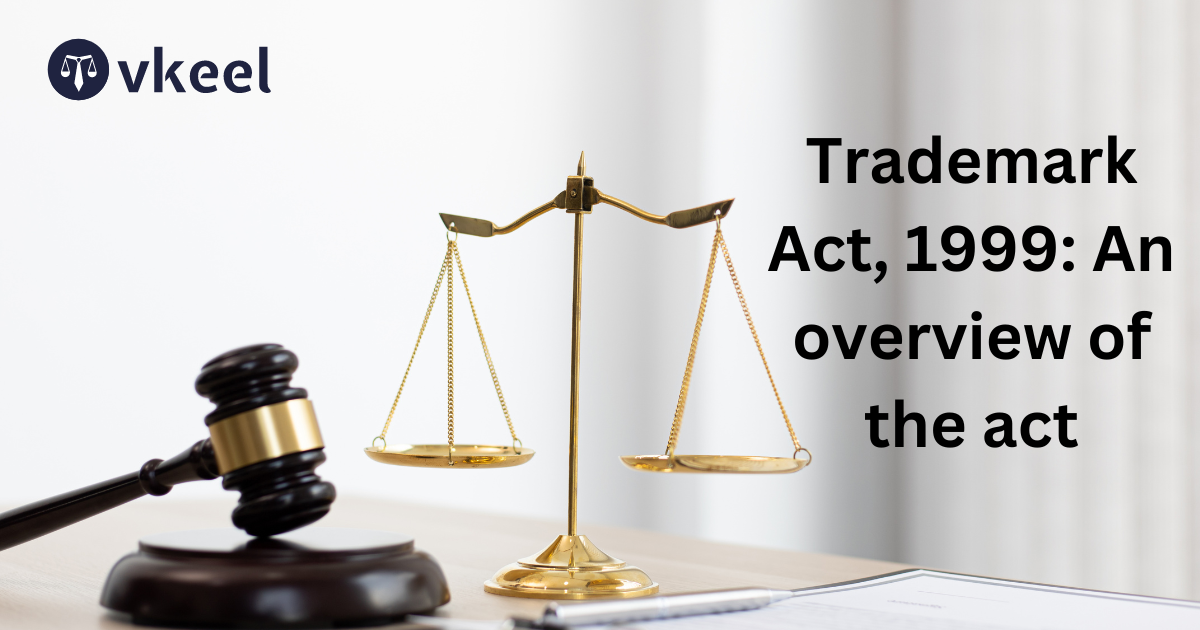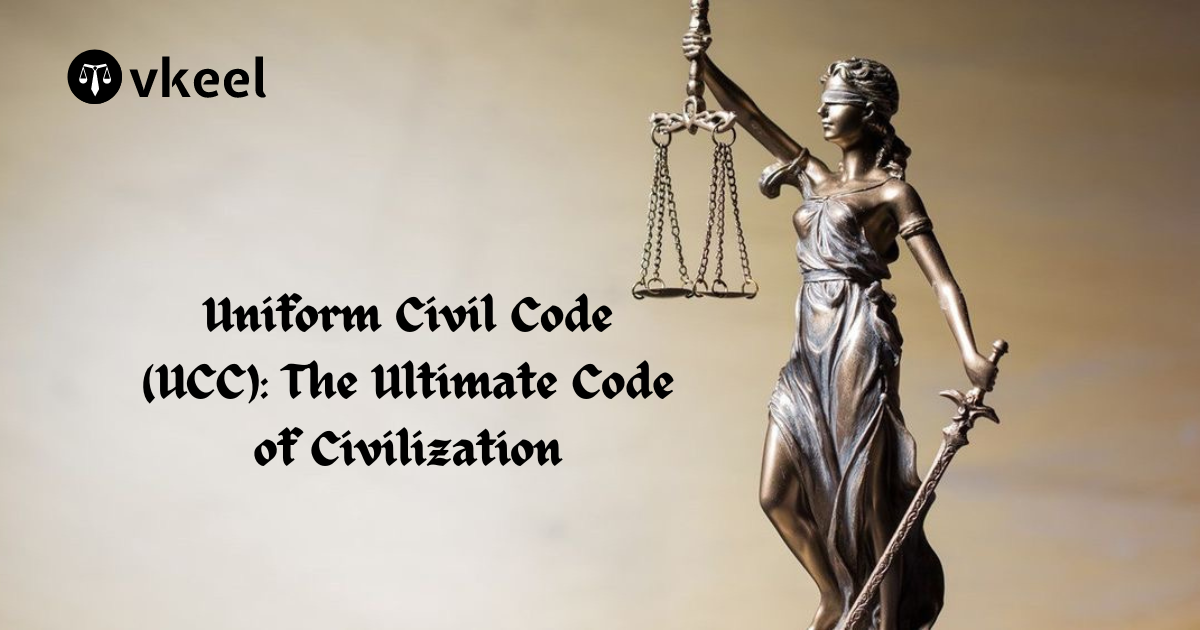Trademark Act ,1999: An dive into the act
By Himanshu Kumar
Table of Contents
Introduction
Trademark is a form of intellectual property consisting of a recognizable sign, design, expression, or symbol that distinguishes products or services of a particular source from those of others. Trademarks can include words, names, symbols, logos, slogans, or any combination thereof.
The primary purpose of a trademark is to identify the goods or services of a particular business and to distinguish them from those of competitors. It helps consumers recognize and associate the products or services with a specific brand or company, thus fostering brand loyalty and trust.
In Indian context, trademark protection is governed by the Trademarks Act, 1999, and is administered by the Controller General of Patents, Designs, and Trademarks under the Department of Industrial Policy and Promotion, Ministry of Commerce and Industry. To obtain trademark protection in India, one needs to register their trademark with the Trademarks Registry. Once registered, the owner of the trademark gains exclusive rights to use the mark in relation to the goods or services for which it is registered.
Trademark registration in India provides several benefits, including legal protection against unauthorized use or infringement by others, the ability to license or sell the trademark, and the establishment of a valuable asset for the business.
Overall, trademarks play a crucial role in branding, marketing, and protecting the goodwill and reputation of businesses in India and around the world.
Origin and development of Trademark Act
The Trade Marks Act, 1999, marks a significant milestone in the evolution of trademark law in India. Its origins can be traced back to earlier legislation, notably the Trade Marks Act of 1940, which provided rudimentary provisions for trademark registration and protection. However, as India embarked on a path of economic liberalization and integration into the global economy, the need for a more robust and modernized trademark regime became apparent.
The Trade and Merchandise Marks Act of 1958 represented an attempt to align Indian trademark law with international standards, particularly those outlined in the Paris Convention for the Protection of Industrial Property. Despite its efforts, the 1958 Act had limitations and did not fully meet the evolving needs of businesses and the global intellectual property landscape.
Recognizing the necessity for comprehensive reform, the Trade Marks Act, 1999, was enacted. This legislation replaced the outdated framework of the 1958 Act and introduced several key innovations. Among its notable features was the recognition of service marks, expanding the scope of registrable marks beyond traditional symbols and names to include shapes, packaging, and combinations of colors.
Moreover, the Trade Marks Act, 1999, established a structured and efficient registration process under the auspices of the Trademarks Registry. This streamlined approach aimed to facilitate trademark registration and enforcement, thereby bolstering the protection of intellectual property rights in India.
Additionally, the Act strengthened enforcement mechanisms to combat trademark infringement, aligning Indian law with international treaties such as the TRIPS Agreement administered by the WTO. These enhancements included provisions for civil remedies, criminal penalties, and border enforcement measures, providing a more robust framework for safeguarding trademarks and combating illicit activities.
Trademark Act, 1999
Definition of Trademark
The Act defines a trademark as a mark capable of being represented graphically and distinguishing goods or services of one person from those of others. This includes names, logos, symbols, devices, or any combination thereof.
Registrable Trademarks
The Act specifies what types of marks are registrable. This includes names, logos, slogans, shapes, packaging, and even non-traditional marks like sounds or smells, provided they are capable of distinguishing goods or services.
Registration Process
The Act outlines the procedure for the registration of trademarks. This includes filing an application with the Trademarks Registry, examination of the application, publication in the Trademarks Journal for opposition purposes, and if unopposed, registration of the trademark.
Rights of Trademark Owners
The Act grants exclusive rights to the registered owner of a trademark to use the mark in relation to the goods or services for which it is registered. It also provides the right to initiate legal proceedings against any unauthorized use of the trademark.
Infringement and Remedies
The Act prohibits the unauthorized use of a registered trademark and provides remedies for infringement, including civil remedies such as injunctions, damages, and accounts of profits, as well as criminal penalties.
Renewal and Maintenance of Trademarks
The Act requires trademark registrations to be renewed periodically to maintain their validity. Renewal can be done every ten years, and failure to renew within the prescribed period may result in the removal of the trademark from the register.
Assignment and Licensing
The Act allows for the assignment (transfer) or licensing of trademark rights. This enables trademark owners to monetize their trademarks by granting others the right to use them in exchange for royalties or other considerations.
International Treaties and Conventions
The Act aligns with various international treaties and conventions related to trademarks, including the Paris Convention for the Protection of Industrial Property and the Agreement on Trade-Related Aspects of Intellectual Property Rights (TRIPS Agreement).
Prohibition of Certain Marks
The Act prohibits the registration of certain types of marks, such as those that are devoid of distinctive character, descriptive of the goods or services, or likely to deceive or cause confusion.
Examination and Opposition
The Act provides for the examination of trademark applications to ensure compliance with legal requirements. It also allows for the filing of oppositions by third parties who believe that the registration of a trademark would infringe their rights.
Future Challenges and Suggestion
The Trademarks Act of 1999 in India has been a significant legislation governing trademarks in the country. However, as time progresses, new challenges and developments emerge in the field of trademarks, necessitating updates and amendments to the existing laws. Here are some potential future challenges and suggestions for the Trademarks Act of 1999:
Emergence of New Technologies
With advancements in technology such as artificial intelligence, blockchain, and the internet of things (IoT), new challenges arise concerning trademark infringement, counterfeiting, and protection of digital assets. The Act should be updated to address issues related to online infringement, domain names, and protection of trademarks in virtual environments.
Globalization and International Trade
The global economy is increasingly interconnected, leading to cross-border trade and expansion of businesses internationally. The Act should be aligned with international treaties and agreements to ensure effective protection of trademarks in foreign jurisdictions and facilitate international trade.
Counterfeiting and Piracy
Counterfeiting and piracy continue to be significant challenges for brand owners, causing economic losses and reputational damage. Strengthening enforcement mechanisms, increasing penalties for infringement, and enhancing collaboration between law enforcement agencies and stakeholders can help combat counterfeiting effectively.
Brand Protection in the Digital Age
With the rise of e-commerce platforms and social media, brand owners face new challenges in protecting their trademarks online. The Act should provide provisions for the takedown of infringing content on digital platforms and establish mechanisms for brand owners to enforce their rights in the online environment.
Protection of Non-Traditional Trademarks
Non-traditional trademarks such as sound marks, scent marks, and motion marks present unique challenges in registration and enforcement. The Act should provide clarity and guidance on the registration and protection of non-traditional trademarks to encourage innovation and creativity in branding.
Trademark Registration Process
Simplifying and streamlining the trademark registration process can help reduce the backlog of applications and improve the efficiency of the trademark office. Introducing online filing options, implementing electronic communication, and enhancing the examination process can expedite trademark registration and improve the overall user experience.
Enhanced Protection for Well-Known Trademarks
Well-known trademarks deserve stronger protection against dilution and infringement due to their high reputation and goodwill. The Act should provide additional safeguards for well-known trademarks, including broader protection against similar marks and preemptive measures to prevent unauthorized use.
Alternative Dispute Resolution Mechanisms
Trademark disputes often involve complex legal issues and lengthy court proceedings. Introducing alternative dispute resolution mechanisms such as arbitration and mediation can offer faster and cost-effective solutions for resolving trademark disputes, thereby reducing the burden on the judicial system.
Case laws related to Trademark Act
Yahoo Inc. vs. Akash Arora & Anr. (1999)
This case set a precedent for protection against domain name infringement. Yahoo Inc. successfully sued a person using the domain name “yahooindia.com” for trademark infringement under the Trademarks Act, asserting that it was confusingly similar to Yahoo’s trademark.
Bata India Ltd. vs. Pyare Lal & Co. (1985)
This case is one of the landmark cases in Indian trademark law. It established the principle that the test of deceptive similarity is to be applied by comparing the marks as a whole and not by comparing the distinctive parts alone.
Amritdhara Pharmacy vs. Satya Deo Gupta (1963)
This case emphasized the importance of distinctiveness in trademarks. It held that a mark devoid of any distinctive character and incapable of distinguishing the goods of one person from those of another cannot be registered as a trademark.
Cadila Healthcare Ltd. vs. Cadila Pharmaceuticals Ltd. (2001)
In this case, the court discussed the concept of prior use in trademark disputes. It held that even if a trademark is registered, if another party can prove prior use, they may have superior rights to the mark.
Amendments related to Trademark Act
The Trademarks (Amendment) Act, 2010
This amendment brought significant changes to the Trademarks Act, including the introduction of provisions for the registration of service marks, protection of well-known trademarks, and recognition of sound marks and scent marks as registrable trademarks.
The Trademarks (Amendment) Rules, 2017
These rules introduced procedural changes to streamline the trademark registration process, including the introduction of expedited examination, electronic filing of applications, and digital signatures for trademark documents.
The Trademarks (Amendment) Rules, 2020
This amendment introduced various changes aimed at simplifying trademark procedures and enhancing the efficiency of the trademark office. It introduced provisions for the expedited examination of trademark applications, reduction in trademark renewal fees, and extension of the deadline for filing counterstatements in opposition proceedings.
Conclusion
The Trademarks Act of 1999 in India stands as a cornerstone legislation governing the protection, registration, and enforcement of trademarks in the country. Over the years, it has provided a robust framework for safeguarding intellectual property rights and promoting innovation and competition in the marketplace.
Through its provisions, the Act has facilitated the registration of trademarks, offering legal protection to brand owners and fostering consumer trust and loyalty. It has also established mechanisms for the enforcement of trademark rights, including civil remedies and criminal penalties for infringement, thereby deterring unauthorized use and misappropriation of trademarks.
Furthermore, the Act has evolved with changing times through amendments and judicial interpretations, addressing emerging challenges such as online infringement, non-traditional trademarks, and cross-border trade. These developments have strengthened the effectiveness of the Act in protecting trademarks in an increasingly globalized and digitalized economy.
Looking ahead, continued efforts to modernize and update the Trademarks Act will be essential to address new challenges and trends in the field of trademarks. By embracing technological advancements, enhancing enforcement mechanisms, and harmonizing with international standards, the Act can continue to serve as a vital tool for promoting innovation, protecting brands, and fostering economic growth in India.
Disclaimer:
The information provided in the article is for general informational purposes only, and is not intended to constitute legal advice or to be relied upon as a substitute for legal advice. Furthermore, any information contained in the article is not guaranteed to be current, complete or accurate. If you require legal advice or representation, you should contact an attorney or law firm directly. We are not responsible for any damages resulting from any reliance on the content of this website.










